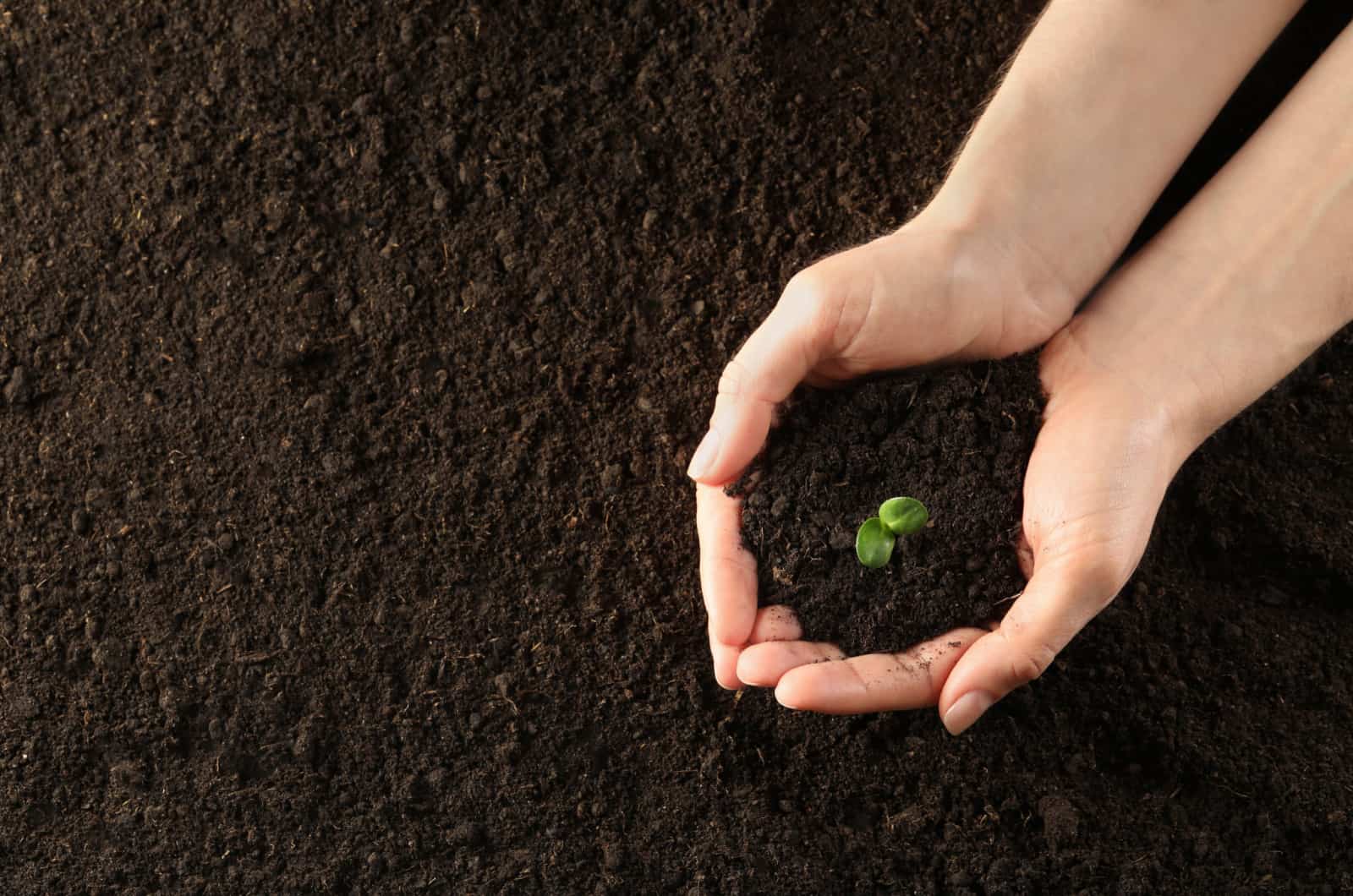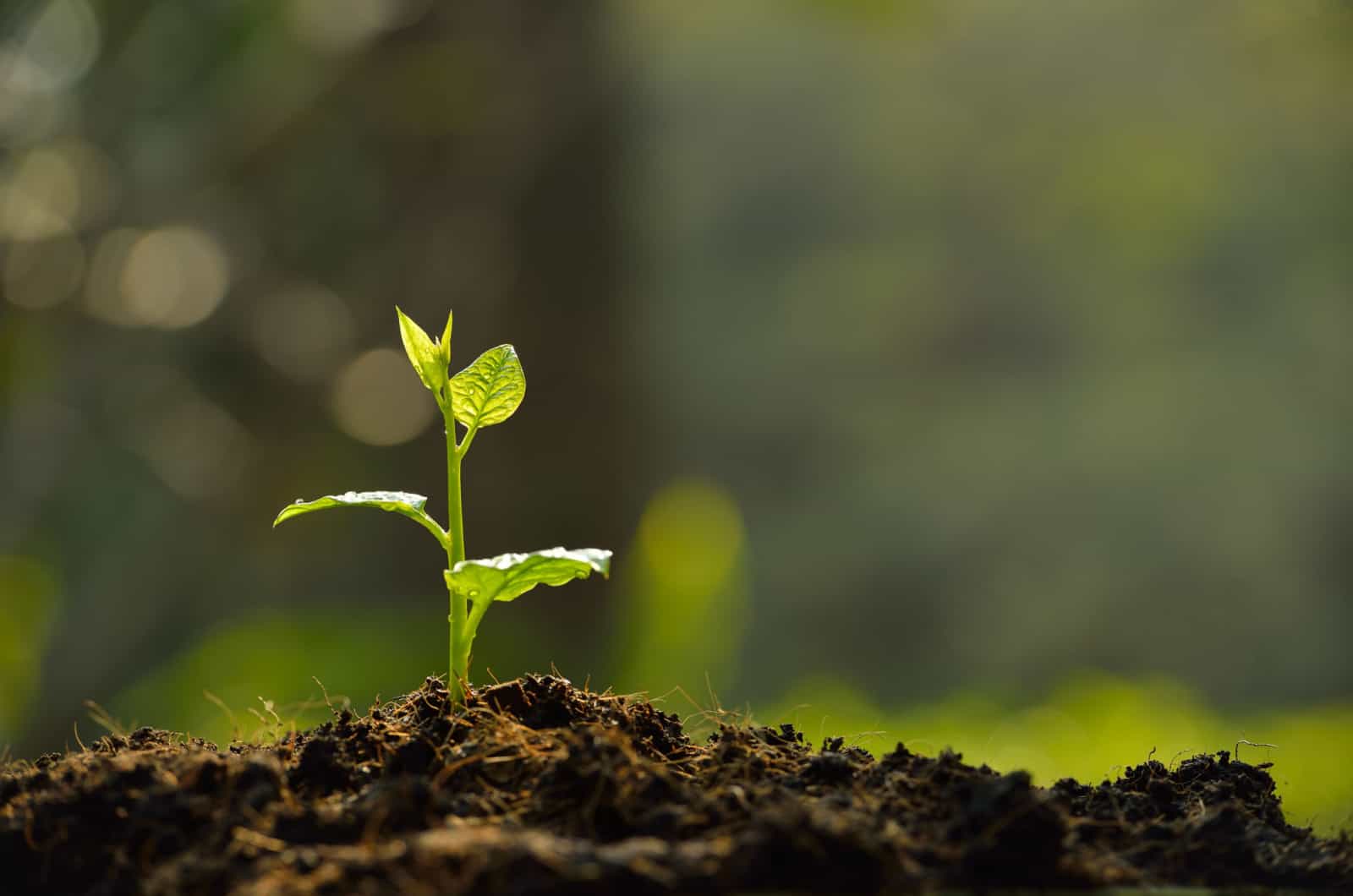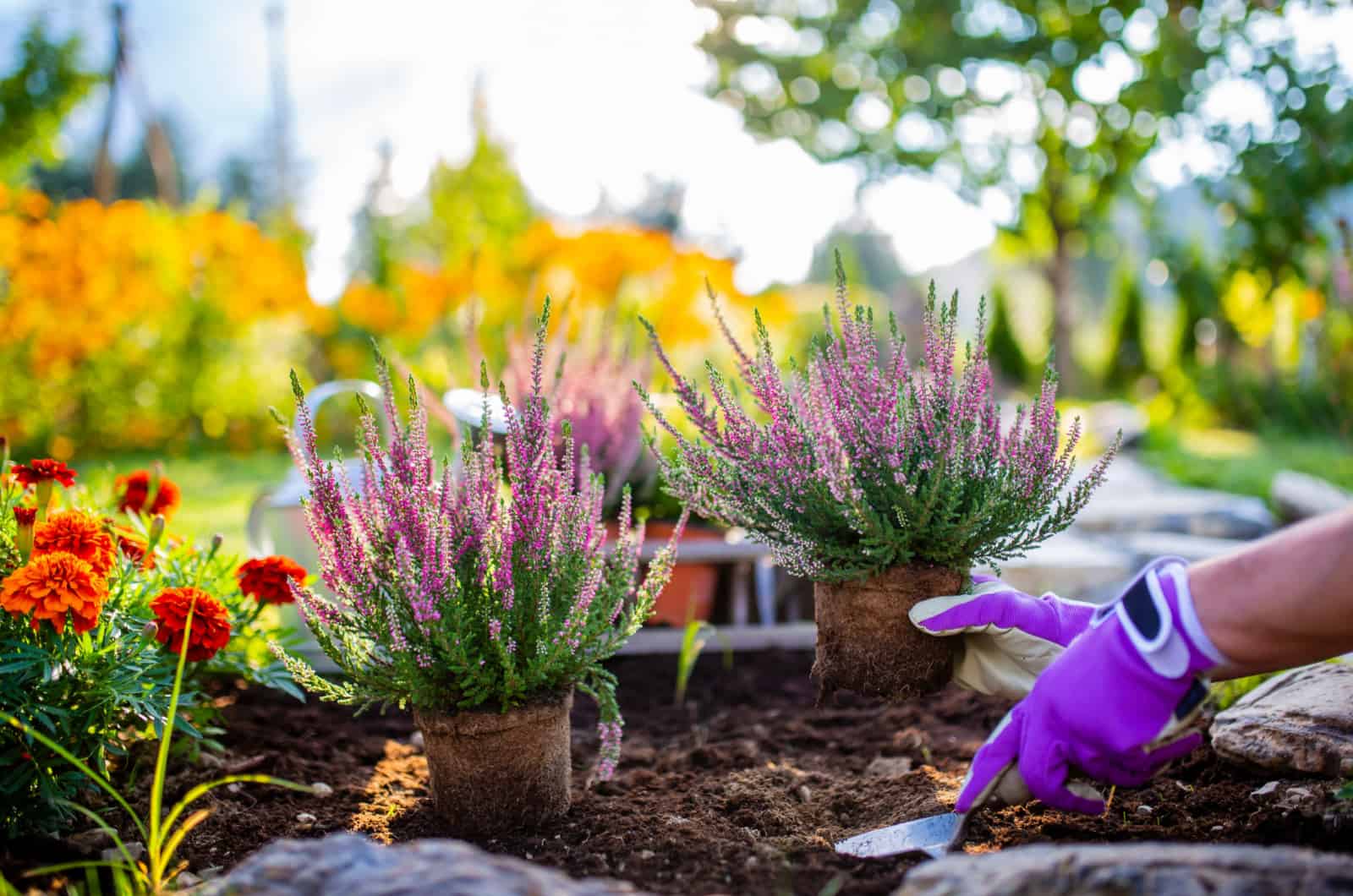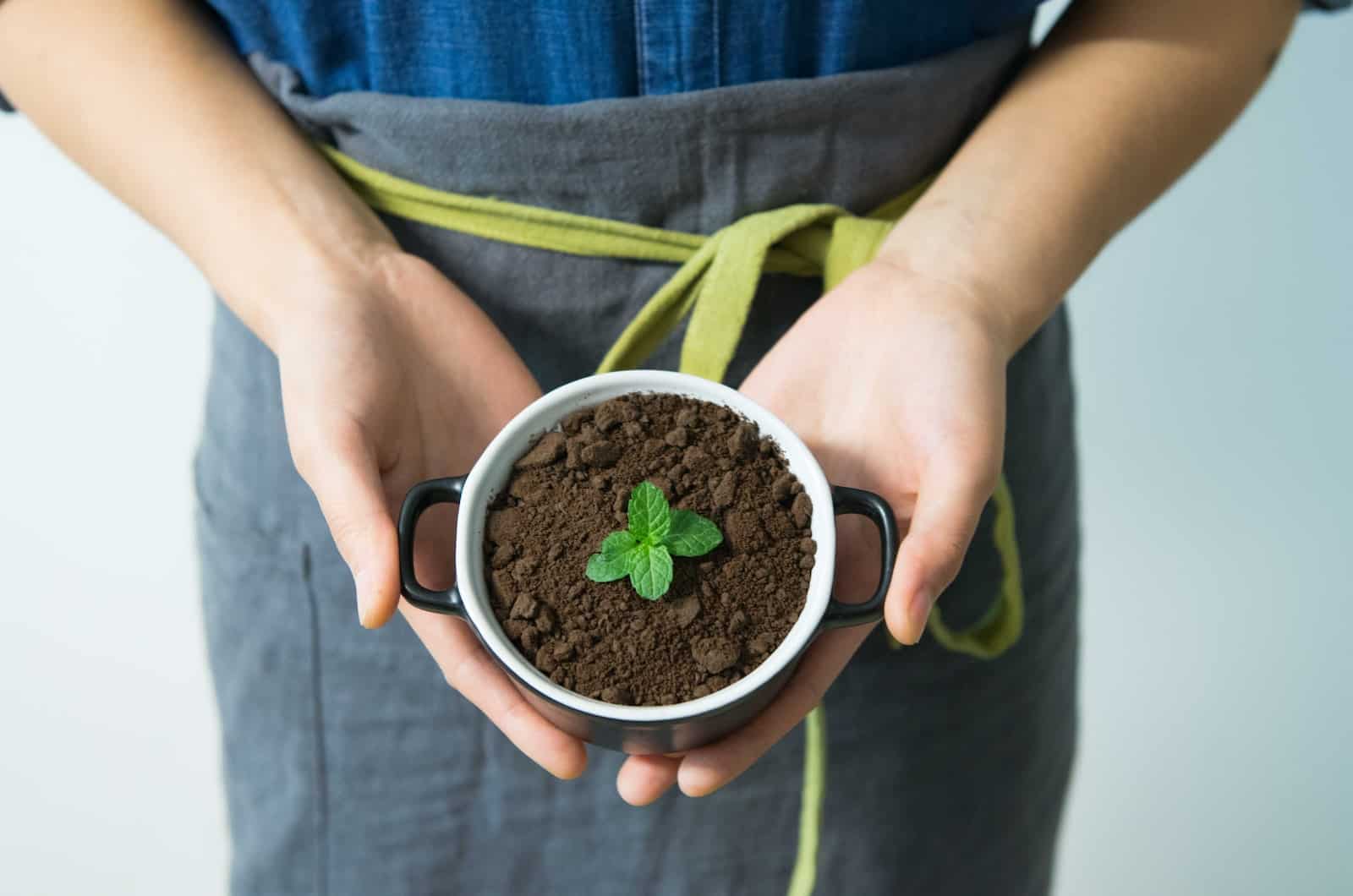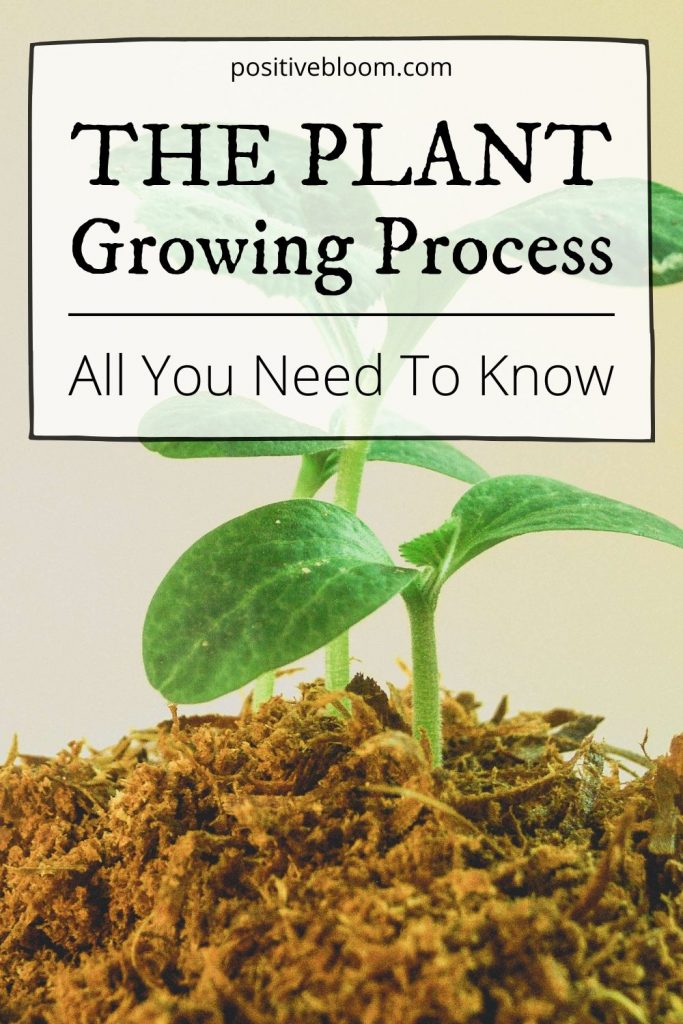I’m sure all gardeners will agree when I say there’s nothing more exciting and impressive than watching your plant grow!
Of course, some plants take longer to fully mature because their growth rate is slow. Each growth stage has its features and requires different conditions to complete.
In this article, I’ll show you the entire plant growing process, its features, and the essential conditions for each life cycle stage.
Let’s get started!
Plant Growing Process
Most plants go through the same growing stages, and need specific temperatures, amounts of light, and nutrition to mature.
The plant growing process includes seed germination, sprouting, the vegetative stage, and the reproductive stage.
Let’s get into details!
Plant Seed Germination
When I first started growing plants, a wise gardener told me that we shouldn’t expect much from a plant without healthy seeds and good care during this stage.
Everything begins with an embryo in the seed. It’s shielded by the seed coat, which will decompose once it comes into contact with moisture.
This process will enable the seed to germinate and continue its journey to the seedling stage.
Seed germination depends on several factors, such as light level, water, and temperature. It’s essential to adjust each condition accordingly, as too much of anything may damage the delicate seeds.
Generally, seeds take a few days to 2 weeks to germinate. Avocado seeds will go through four growth stages before reaching maturity.
Plant seeds need moisture to germinate, so we need to plant them deeper to avoid dehydration. Deeper, in this case, means at a depth twice the seed diameter.
This way, you’ll avoid damaging the seeds, but they’ll still have enough light and moisture for germination.
Sprouting
The first observable change in the germination of the seed is the development of nodes.
These nodes pierce the seed’s shell to expose the plant’s radicle, or main root. The radicle helps the seed stay in place by serving as an anchor, and aids in nutrient uptake from the soil.
The next thing to occur is plumule, which is responsible for the development of the first shoots. It consists of several cotyledons, and this process ends with true leaf formation.
Check out these veggies that you can easily grow from seeds.
Vegetative Stage
The next stage of plant growth is called the vegetative stage, and it can take from 3 weeks to 4 months to complete.
In this stage, the plant’s roots extend and take up more space in the soil. The first leaves are visible above the soil line.
Your plant starts to perform photosynthesis; the process by which leaves absorb light energy, water, and carbon dioxide. The plant uses these to make its own food, primarily sugars, with the help of chlorophyll. This green pigment is responsible for healthy leaf color.
Nutrients are essential in this part of the plant growth cycle. There’s no green pigment if there isn’t enough Nitrogen. It would be best if you perform a soil test and add Nitrogen if needed.
A lack of Nitrogen in the plant soil may affect the vegetative stage, and the plant’s further development will be significantly inhibited.
You’ll also need to pay attention to soil moisture content at this point. The root system needs moisture to develop completely and send nutrients to other plant parts.
Also be careful how much water you add to the soil; the last thing you need now is overwatering.
Another process that occurs during this stage is transpiration. Water transpires from plant leaves into the air when the stomata (in the epidermis) open and lose water.
Here’s a video showing the root system, stem, and leaf formation in kidney beans:
Reproductive Stage Of Plant Growth
Now we come to the last phase of plant development, which takes place when a mature bloom or plant is prepared for reproduction.
Any nutrients your plant uptakes are channeled toward the formation of blooms, pollen, seeds, and fruits.
Your plant uses more energy and needs more food at this point. The growth doesn’t depend on Nitrogen anymore, but instead on other nutrients such as Phosphorus and Potassium.
Flowering plants will form buds; the time needed for the flowering stage depends on the plant species.
Pollination
Pollination will occur after a bird, bee, or similar pollinator spreads pollen from one plant to another (from the same species). Pollen from the male reproductive organ falls or is rubbed onto a pollinator.
It then transfers pollen to a different flower, which adheres to the female portion. After being fertilized, the flower eventually produces fruits and seeds.
Seed dispersal
Everything ends with seed dispersal. Seeds may disperse with the help of wind or pollinators.
The plant life cycle restarts when seeds fall on the soil. Every plant strives to achieve this, which is how we get new plants.
Ripening
The last growth stage of fruit and vegetables is ripening. For example, lemons go through 4 growth stages before ripening.
FAQs
How do plants grow?
Plants grow if provided with enough light, nutrients, moisture, air, and temperature. The three major processes that occur during plant growth are photosynthesis, respiration, and transpiration. In order for the plant to develop healthily, you need to ensure the best possible conditions that will contribute to the processes above.
What is the purpose of a plant’s root system?
The roots transfer water and food to all other plant parts, including leaves and stems. A firm and healthy root system provides water and nutrients for the plant to create energy and focus on new growth.
Wrapping Up
The plant growing process includes different stages of growth, such as seed germination and the vegetative and reproductive stages.
These stages of plant growth are characterized by different processes and depend on several factors.
Rich soil, enough water and light, and the right temperatures are needed for healthy plant development in your garden.
Enjoy these processes and landscaping, as it really has a lot to offer.
Until next time!
Like this post? Share or pin it for later!

